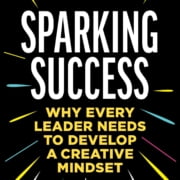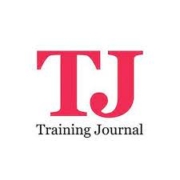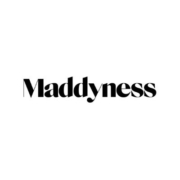Next generation leadership
Our youngest colleagues, Generations Y and Z are transforming the future of work, management and leadership. If you want them to thrive and deliver value, you’ll need to do some serious thinking first.
Ask anyone over the age of 40, and they’ll likely say the same thing: promotion, reward, and the steady climb up the corporate ladder are all earned and paid for by commitment to the job, loyalty to the company and perhaps more than anything else, by investing the time at work. It takes time – several years – to really learn the ropes and to demonstrate readiness for more responsibility. However, our youngest generations in the workplace have turned much of this accepted wisdom on its head.
A generation on the move
HR leaders and managers describe a new wave of workers who are prone to leave their jobs with ‘frightening’ rapidity. This is a generation that stays around for two to five years before moving on to the next opportunity; a cohort that cleaves more to purpose than to material reward, that demands to know why as much as what they are required to contribute or accomplish, and whose primary dedication is not to the organisation but to the immediate team and the individuals who surround them.
Generation Y and Z are our leaders of tomorrow. And they are starting to agree to positions of influence already. They are also causing friction with existing leaders who don’t know how to manage them.
In researching my book, Next Generation Leadership: How to Ensure Young Talent Will Thrive With Your Organization, I had plenty of opportunity to survey, interview and observe Generations Y and Z, as well as the organisations and managers who hire them. The core issue is a shift in priorities, expectations and values; a sea-change in the paradigms of work and leadership that set the upcoming generation apart from (and very often at odds with) the existing leaders. And it’s not their fault.
Economic and social realities impacting younger generations
You have to remember that this is a generation that won’t have the security of retiring on a defined benefit (final salary) pension. The golden handcuffs and a job for life simply don’t exist for them. They’re also the first generation that will experience the 100-year life as a reality, as explained by London Business School Professors Lynda Gratton and Andrew Scott. Now, as we live longer, the expectation is that we’ll also have to work longer; the luxury of retiring at 65 will be replaced by the necessity to go on working into our 80s. Many Millennials will be spending probably sixty years of their life working, and that has shifted expectations and driven a stronger feeling of choosing where they work, who they work for and how long they choose to stay.
The younger generation also prioritises values beyond material possessions, such as purpose, development, culture and work-life balance, demonstrating a broader perspective on what constitutes fulfilment compared to their forebears, who were mainly focused on salaries, bonuses and promotions. Capitalism is a ‘fungible concept,’ and as these emerging leaders assume influence, we are likely to see a swing in focus from outcomes to outputs: from returns and share prices to impact and value for customers, employees, communities and the world.
The need for leadership recalibration
To manage this new generation more effectively and to ensure that they thrive, deliver value and feel better connected to the business, organisations need to start thinking differently.
I believe today’s leaders need to rethink their ideas and expectations about managing tomorrow’s leaders. There are things that the Baby Boomer and X generations have to let go of: the idea that young talent will stick around forever, that investment in things like development and training is tied to occupation, or that emerging leaders must be 100% dedicated to their job at the expense of all other interests or activities. We need to embrace their agility and recognise that the workforce can be fluid without it always damaging our long-term prospects.
But how do we enact this kind of shift in thinking? My work over fifteen years with emerging high-potential leaders and their companies harvests key insights. I surveyed such talent across 44 countries, complementing quantitative evidence with qualitative analysis across a sample that spans highly diverse industries and sectors. My findings point to a broad homogeneity in their priorities – a generational ‘tightening’ that stems from having much in common. They are the first truly global generation, the first to be digitally connected from the start, and a generation who will live – and work – longer than their predecessors by a considerable margin. This consistency or homogeneity makes it possible to see Generations Y and Z as a more coherent group while recognising that to discuss generations does force one to generalise, but I urge us not to dismiss the findings merely because one can find an exception: If we can better understand patterns and trends that are more true than not, then this can only benefit our ability to manage and empathise with our youngest colleagues.
Six strategies for managing young talent
This, in turn, makes it possible to distil insights about them into actionable ideas for their managers: practical frameworks, strategies and tools that he shares to ensure that young talent can thrive within today’s organisations.
Here are six effective strategies for successfully managing and nurturing young top talent:
- Articulate your purpose: Be proactive in terms of helping employees articulate their purpose and help them connect it to the mission of your organisation. An impactful and cost-effective means of doing this is to put together a workshop. Build this around two central ideas: Why should talent work here versus anywhere else? Why should customers come to us versus anyone else?
- Hold each other to account: Organisational culture is something that needs to be engineered versus emerging organically. Aim for transparency, responsibility and accountability as a rule, and be clear about the kinds of behaviour that model your organisation’s ethos. Consider what behaviours, if shared among your bellwethers, would become new norms.
- Be fluid about development: Understand that development opportunities should not be tied to tenure. There are a host of cost-effective measures your organisation can take to weave training and development into everyday life, from shadowing to coaching to international placements to secondments. Aim to think more dynamically about development.
- Re-consider what work-life balance means: The top priority for Generations Y and Z is work-life balance, a request many organisations have resisted. However, the shift to remote work has made it essential for employers to adapt. Even post-pandemic, our digitally connected workforce must become adept at managing virtual teams, as a complete return to pre-pandemic norms is unlikely. Through experimentation, I’ve found that certain tasks are more effective in virtual settings. For instance, brainstorming sessions benefit from an asynchronous discussion board, which minimises the influence of dominant voices and fosters a more equitable exchange of ideas. Work-life balance often sparks generational misunderstandings. Baby Boomers and Generation X tend to view it as a “when” request, mistakenly believing that younger generations seek to work less. In contrast, Gen Y and Z see it as a “where” request, viewing the traditional 9-to-5 model as outdated in a world where technology allows constant connectivity. Emerging leaders crave flexibility and autonomy in how and where they work. It’s crucial for organisations to ensure clarity in their policies to avoid differing interpretations across generations. The current climate of self-isolation offers a valuable opportunity to practice effective remote work strategies.
- See the value in side hustles (projects on the side): Talented young people often have interests that go beyond their role or your organisation. Whether it’s charity work, a personal website or projects that leverage professional skills, try to reframe these activities as sources of dynamism – both intra- and entrepreneurial development. Encourage your employees to pursue opportunities to learn – and to share that learning.
- Be flexible about people leaving: After all, they might well come back. Try to onboard new staff faster. It shouldn’t take two years to learn the ropes. Encourage a sense of fluidity that leaves the door open so that your leavers build new skills and knowledge to bring that back to your organisation should they choose to return further down the line. Embrace this fluidity and find ways to make it work to your advantage. Many professional services firms are world-class at cultivating an alumni network of former colleagues, even hosting reunions!
As Generation Y and Z accede to leadership, I believe that our world of work is set to become more ‘human’. The real challenge for today’s employers is to leverage this forward momentum to the advantage of the organisation.
Prepare your leaders for the future. Discover how we can help your organisation develop leadership strategies that align with the expectations of the next generation. Learn more
About author












